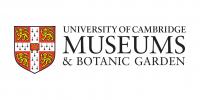Session outline
In this session, we will explore the life of Charles Darwin and the origin of his ideas on Evolution and Natural Selection. We will then look in more detail at the process of Natural Selection, how it works and leads to animals becoming better adapted to their environment. This is followed by an exploration of feeding adaptations in animals, including a handling session with skulls from the Museum to look at teeth and how they are adapted to different diets, and gallery activities to make observations of the animals on display and describe their feeding adaptations. The session ends with a ‘scientific experiment’, using a game developed by butterfly researchers in the Department of Zoology to explore the evolution of warning colours and mimicry.
Duration
This session lasts a total of around 1.5 hours, organised into activities of no more than 15 minutes. We recommend a 2 hour visit to the Museum, so that your class then has more opportunity to explore the galleries, and have included some suggested self-led activities below.
Resources
We will provide a workbook for the museum-led aspects of this session, and clip-boards for use during your visit. We recommend that you bring pencils with you.
Learning outcomes
- Brief history of Evolution
- Introduction to natural selection and how it leads to adaptation
- Knowledge of how the teeth of different mammals are adapted to their diets and why this is important
- Knowledge of different roles of colour in animals
- Understanding of warning colours and mimicry in insects
- Thinking scientifically – developing a hypothesis to test and collecting data
- Observation skills – looking in detail at specimens and drawing and describing structures they can see and feel
- Numeracy – counting and recording data in a table
- Literacy – providing oral and/or written descriptions of animals in the collections
Curriculum Points
- Identify that animals, including humans need the right types and amount of nutrition, and that they cannot make their own food; they get nutrition from what they eat
- Identify how animals and plants are adapted to suit their environment in different ways and that adaptations may lead to evolution
- Recording findings using simple scientific language, drawings, labelled diagrams, keys, bar charts, and tables
- Using test results to make predictions to set up further comparative and fair tests.
Related self-led activities
Extension activities and information
During the session we use the Evolving Butterflies game to look at the evolution of mimicry. This was developed by the research group in the Department of Zoology led by Professor Chris Jiggins. More information can be found from their website: http://www.heliconius.org/
It is possible to look in more depth at the evolution of butterfly wing patterns using this game. In the gallery session we will look at the total pattern and not the component parts. You could see if different types of patterns are easier for the predator to distinguish and so easier to mimic. A more detailed outline for an experiment of this sort can be downloaded here.
Available Tuesdays, Wednesdays and Thursdays during school term-time. To book this session please see our School Visits page and complete a school booking request form.





